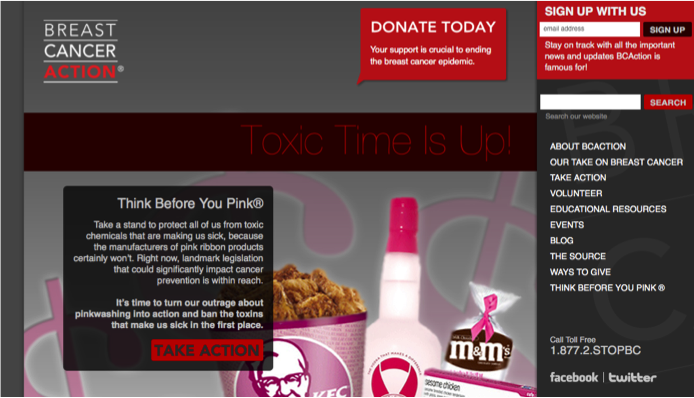How to Tell Your Nonprofit’s Story Through Your Website (Part 1 of 2)
Posted by Zach Hochstadt on October 21st, 2013
Posted in Blog, Nonprofit Branding, Nonprofit Communications, Nonprofit Copywriting, Nonprofit Messaging, Nonprofit Web
This is Part 1 of a two-part post. Part 2 is here.
If you’re like most nonprofit professionals, your website probably contains some surprising facts and figures about the field in which you work. Maybe you have a detailed explanation of your mission and program areas right on the homepage. Your website might even have a collection of downloadable resources, like white papers or presentations. But beware: all your information—even if it’s well articulated and expertly researched—will be lost on your audiences if it doesn’t fit into a story. Like any story, yours will have a protagonist (your organization) battling an obstacle (the problem you exist to solve). As for the solution, you’ll make clear to your reader how he or she can help.
Before you write your story, you’ll need to do some analytical thinking about your organization, audiences, and goals. This groundwork will guide both your copy and your designs. When your visuals and writing both serve the same strategic goals, your website will tell an engrossing story about you and your challenges. Not only that, but the site will also inspire your audiences to get involved.
Before You Start
1. Know your brand: Even if you never use the word “brand,” you have one. Your organization’s brand is its reputation, which exists in the minds of your audiences. Every aspect of your organization, from your email signatures to your clothing choices to your office layout, influences your audiences’ impressions of you.
Since your website is a highly visible communication, you need to make sure it reinforces your desired brand. Your layout, copy, and graphic designs should reflect your organization’s values and personality. The site should speak to whatever big promise your organization is making, whether that’s to create powerful improvements in global health or to end domestic violence.
If you have a rebellious brand, then you should have energizing copy and visuals. Breast Cancer Action made a name for themselves as the “Bad Girls of Breast Cancer.” As such, their website isn’t pink and polite—it’s red and bold. By establishing your brand, you’re characterizing the protagonist of the story you’re telling.
2. Know your goal: Your website shouldn’t just make you visible online or inspire warm feelings about your organization. Challenge yourself and your colleagues to be specific about what your website will accomplish. Will it convince your visitors to donate? Sign a petition? Volunteer? The more specific you can be, the better.
Ultimately, the story you tell about your organization will serve your goal. If you want your audiences to donate, for example, you’ll leverage your copy and design to highlight the ways in which financial support—and only financial support—makes your work possible. Don’t water down the story with details that detract from fundraising.
Your website’s story will give your audiences a stake in your organization’s fate, and from there, they’ll feel moved to help you meet your goals. But they can only help you meet your goals if you define those goals first, and then guide your audiences toward them.
3. Know your audience: Get into the heads of the people who will browse your site. What are they looking for? What’s important to them? Once you understand their priorities, speak to those priorities—not your own. This knowledge of your audience will help you set an appropriate tone for your story. Are you the populist who’s galvanizing the everyman, or are you the elite organization who speaks to status-driven audiences?
Once you’ve laid the groundwork, you’ll be equipped to tell an affecting story with images and writing alike. In Part 2, we explain the techniques you can use to reinforce your story through every aspect of your site.
Zach Hochstadt is a Mission Minded Founding Partner and runs Mission Minded’s Denver office, leading the company’s creative teams in the areas of message development, writing, graphic design, and web design and development.
See all posts by Zach Hochstadt
